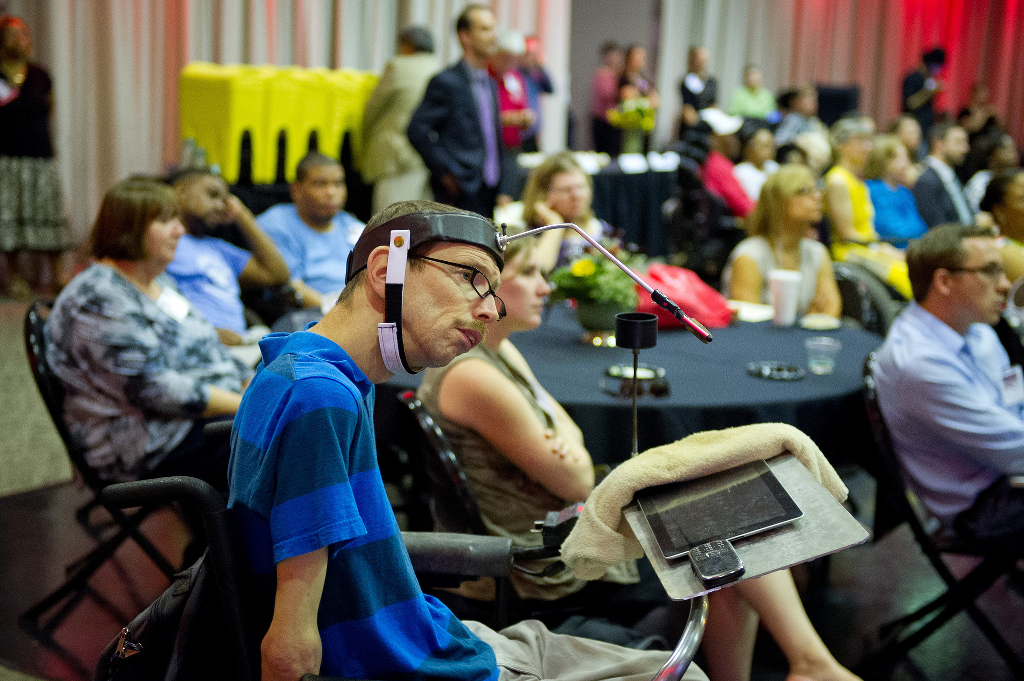The term “biopolitics” was first ushered into wide use in a variety of academic fields of inquiry by French theorist Michel Foucault during his lecture series “Society Must Be Defended,” delivered at the College de France in the late 1970s. In a nutshell—and a simplified one at that, for the purposes of this review—biopolitics refers to the overall control of citizens’ bodies and states of being by state apparatuses, and the ways in which this control shows up.
A biopolitical lens can be applied to a variety of current and political events that have to do with bodies, the state, and control—from U.S. presidential candidate Donald Trump’s fixation on building a wall between the U.S. and Mexican borders to keep “illegal immigrants” out, to the recent panic in the U.S. over the so-called “opioid epidemic” that (conveniently) leaves out the perspective(s) of people with chronic pain who depend on opiate medications to have some semblance of a normal life—the effects, positive and negative, of biopolitics are everywhere.
George Washington University Professor of English David T. Mitchell and his co-author Sharon Snyder convincingly and aptly examine the implications of 21st century, neoliberal biopolitics for people with disabilities in their new book The Biopolitics of Disability: Neoliberalism, Ablenationalism, and Peripheral Embodiment. The book’s central thesis argues that neoliberalism in the 21st century–which, in Mitchell’s words, “involves strategies of the seizure of the very materiality of life at the level of the individual” (8)—has made space for the acceptance of certain kinds of disabled bodies, but this comes at the direct expense of other disabled and marginalized bodies.
This conditional acceptance and welcoming “establishes a form of biopolitics within which nationalism and ableism come together.” Of course, some may argue that any acceptance—however conditional—of people with disabilities into the mainstream is good for all people with disabilities.
However, Mitchell and Snyder strongly contend that this is not the case. The conditional acceptance of people with disabilities who also happen to uphold certain neoliberal and abled norms—especially those regarding capitalist ideas of productivity, appearance norms, and ways of functioning—serves to push disabled people who cannot uphold those norms further past the margins of society. The conditional acceptance of disabled “heroes,” hyper-enabled sports stars, and the “Supercrip,” who is great at one thing and so inspiring to nondisabled people, are just a few examples of a neoliberal embrace of some people with disabilities, to the ultimate exclusion of others.
Mitchell and Snyder’s first chapter, “From Liberal to Neoliberal Futures of Disability,” outlines how this acceptance/exclusion process works, and how biopolitics influences who gets left out and who is accepted by state apparatuses, the media, and systems of nationalism.
A “conditional acceptance” of specific disabled bodies also has implications for people whose disabilities are unpredictable, not visible to the naked eye, or cast aside by nondisabled people in ways large and small because they are thought to be “not really disabling.” For example, think of the many jokes regarding Restless Leg Syndrome and Chronic Fatigue Syndrome that every hack comedian thinks are just hilarious, and the many internet comments arguing that fibromyalgia is not a real illness.
Mitchell and Snyder’s points about which kinds of disabled bodies get included in the nationalist project versus which do not were extremely compelling to me, both as a longtime reader/student of Disability Studies and as a person whose disability (fibromyalgia) forces me to walk a fine line—often with my cane—between a kind of conditional acceptance in certain settings and outright dismissal in others.
The book’s second chapter, “Curricular Cripistemologies; or, Every Child Left Behind,” is its strongest; here, Mitchell and Snyder critique academia’s overall silence when it comes to disability and disability studies—except for when universities or individual departments are able to use students or professors with disabilities to check the box for “diverse” or “multicultural” funding or hiring initiatives. Conditional acceptance rears its monstrous head again in said initiatives; some people with disabilities are accepted, but some are not.
As the authors explain, their critique in this chapter “centers on inclusionism as a neoliberal gloss on diversity initiatives that get some disabled students in the door while leaving the vast majority of crip/queer students behind” (80). The questions that Mitchell and Snyder ask here are not simply hypothetical or theoretical. There are some very real boundaries that keep the majority of people with disabilities from accessing—or thriving in—higher education.
Various chapters in The Biopolitics of Disability cover such wide-ranging topics as “disability futures” in the classic film Midnight Cowboy, the politics of disability film festivals, disability representation in independent films, online support groups for rare health conditions and the navigation of the medical industry, the labeling of certain people with disabilities as “unproductive,” and the implications of said labeling for modern capitalism.
I found this book both informative and a great call-to-arms for Disability Studies, the academic Humanities, and the disability rights movement. If you’ve had trouble understanding terms like neoliberalism, biopower, and biopolitics in the past, you should think about taking a look at this book—Mitchell and Snyder provide comprehensive definitions of these terms and real-world examples of these ideas in action. If The Biopolitics of Disability seems like a book that you would enjoy due to its content and subject matter, I’d encourage you to check it out.
The Biopolitics of Disability (ISBN: 9780472052714) is available now from the University of Michigan Press.
Photo: Maryland GovPics/Creative Commons

